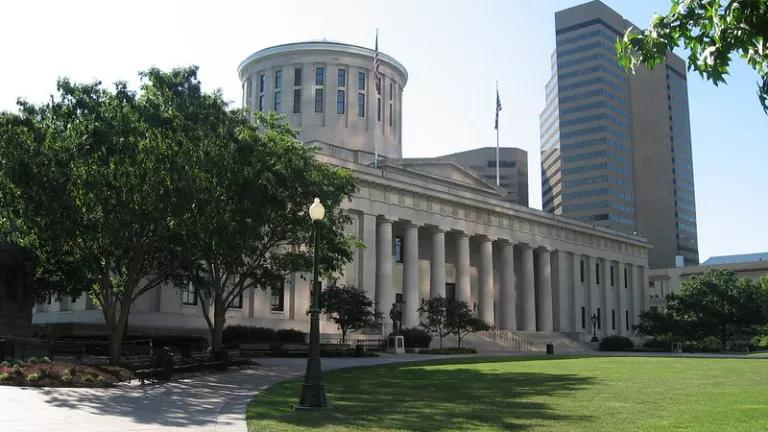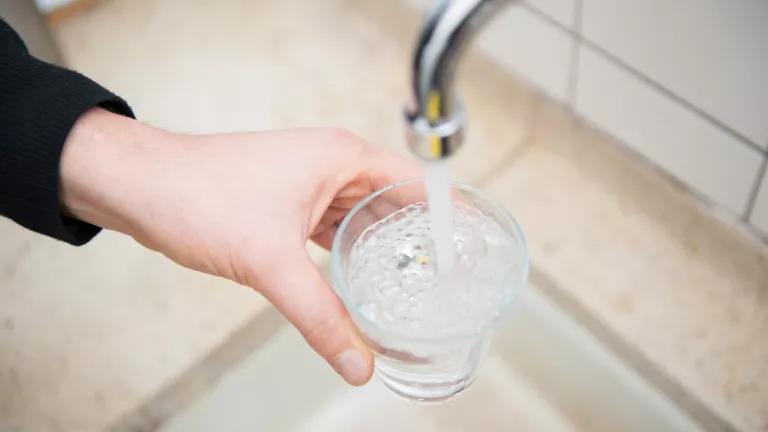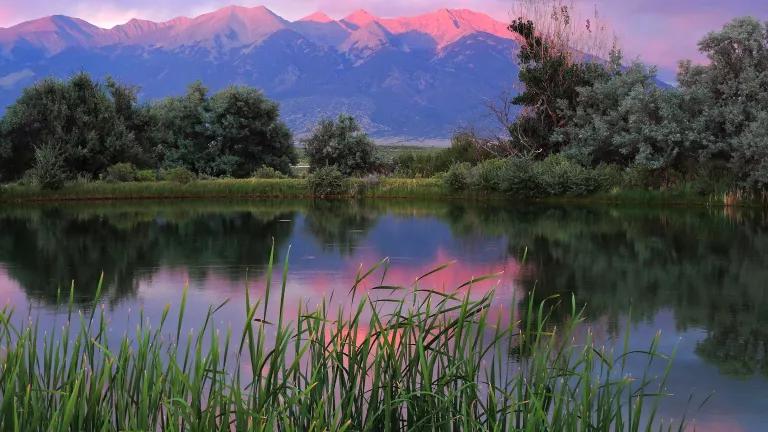How Can I Wash My Hands Without Water!?

As a combat veteran, one of the more difficult parts of dealing with this global pandemic has been my inability to go out and fight this enemy head on. I don’t have a kevlar, a rifle and humvee to hop into and head outside the wire into battle. I’m home with my family. And I’m doing what’s best to protect those that I love, while looking for leadership from my state and local leaders.
Since the COVID-19 global pandemic has taken hold nationwide, NRDC has swiftly put intense focus on actions that governors and other elected leaders around the country can be—and have been—taking to protect our most vulnerable. We have focused on advocating specific actions at the local, state and federal levels to protect at-risk communities from the perils associated with a lack of access to essential utility services. We are also communicating those actions to our members so that they can support other Americans—and other Ohioans—in this time of critical need.
I’m pleased to be able to say that Governor Mike DeWine—with the incredible support of the now-famous Dr. Amy Acton—has been moving in lockstep with our internal analysis of the actions needed to protect essential utility services for Ohioans. And I’m glad to see a Buckeye leading this country through one of the most difficult times of our generation.
As it relates to public utility service, our initial response was mostly focused on ensuring electric and gas service was not disconnected—and was reconnected where needed—but water utility shutoffs quickly became the focus of the coronavirus pandemic for NRDC, and for good reason. I am beyond happy to share that Ohio is considered a leadership state around the country here at NRDC, even as we urge the governor to address some remaining needs to ensure that everyone has access to running water.
What Governor DeWine Has Done
Following an emergency declaration by Governor DeWine on March 9, the Public Utilities Commission of Ohio issued two official Orders on March 12 and 13 directing water, energy, gas, and telecom utilities to suspend all service disconnects and make reasonable efforts to reconnect those without service. While the separate Orders acknowledged the PUCO’s lack of jurisdiction over many utilities—including publicly owned water utilities that serve the majority of the state’s population—it “urged” those other utilities to take the same actions. This is a laudable action by Chairman Randazzo and the other commissioners, but it didn’t go far enough to cover the state’s most vulnerable utility customers and further action was needed. Governor DeWine and Dr. Acton recognized as much.
On March 27, the Ohio legislature met to enact an emergency state stimulus bill (HB 197), which included a provision “authorizing” Ohio EPA to issue an Order that did any of the following:
- Required a public water system to restore service to any customer whose service was disconnected as a result of nonpayment of fees and charges;
- Required a public water system to waive all fees for connection or reconnection; and
- Prohibited a public water system from disconnecting customers because of nonpayment of fees and charges.
These new provisions are valid throughout the emergency declared by the governor’s Executive Order, but not beyond December 1, 2020, if the period of the emergency continues beyond that date. The bill summary notes that “Ohio has approximately 4,900 public water systems providing drinking water to 11-plus million people daily. About 30 percent of that population, or 3.3 million people, is served by the cities of Cleveland, Columbus, and Cincinnati.”
Following the lead of Governor DeWine and Dr. Acton, the Ohio EPA acted on this new authority by implementing its own Order whereby the agency took up the three elements outlined in HB 197. Gov. DeWine was quick to share the news on his Twitter account, providing needed comfort to those Ohioans who were concerned whether they’d regain access to essential water service during this crisis.
But There’s More to Do
While the Ohio EPA Order is a significant and critical step in the right direction, there are a few additional actions the governor could take to protect vulnerable Ohioans, while continuing his streak of compassionate nationwide leadership.
- Reconnection: The EPA’s implementation guidance places the onus on the customer to request reconnection of their service. Instead, utilities should be required to proactively reconnect service to customers as many may not be aware of this new policy or have the time and capacity (i.e., landline phone or adequate cell phone minutes) to reach out. To facilitate the restoration of water service, any water utility in Ohio must immediately make best efforts to determine which occupied residences within their service areas do not have water service. Additionally, while the Ohio EPA Order, to the state’s credit, requires reconnection of people shutoff before the health emergency as early as Jan. 1, 2020, utilities should look back further and ensure all currently occupied residences are reconnected, regardless of the shutoff date. Finally, the implementation guidance also flags the critical need to properly flush pipes upon reconnection to avoid contamination with lead, bacteria, or particulate matter. The EPA should take the further step of issuing technical guidelines for utilities and residents on how to do this flushing to ensure the water is safe to drink, such as the guidelines issued recently in Michigan.
- After Health Emergency - Arrearages and Financing Options: The shutoff moratorium extends until the end of the declared health emergency. But people will need time to regain their financial footing as the economic crisis continues. To address this, the moratorium should be extended to at least 120 days beyond the end of the health emergency. It’s also unclear what will happen to water bill arrearages after the emergency order is lifted. To date, Governor DeWine has emphasized on Twitter that people will still be required to pay any bills that accumulate during this time, making the burden on those Ohioans even more significant. It’s good that fees for connection/reconnection are being waived, but attention should be given to late fees, interest, any related penalties/charges, suspension on the use of liens as a collection practice, and there should be an opportunity for extended repayment plans. And with shutoffs even as short as one week, stagnant water in household pipes can become contaminated with lead and bacterial growth and may also damage water heaters. The state should identify ways for customers to receive funding that would allow for repairs to problems that may otherwise prevent water service from being reconnected.
- Emergency Water Stations: Perhaps most urgent, the governor’s actions have not yet addressed the need for emergency water distribution stations for anyone awaiting reconnection and for homes where the tap water will not be safe after reconnection. This is essential as many homes will not be reconnected right away, despite the best efforts of all those involved and, as noted above, in homes where water has been shut off it will take a while for the tap water to be safe for drinking and cooking. It’s very difficult in parts of the state to find bottled water, and that’s if you have transportation to get to a store. Water donations have declined since the onset of COVID-19.
Hope for a Better Future
It’s incredibly humbling for these harsh realities to be brought to the fore in such a way, but I have newfound confidence in our governor’s ability to do the right thing and help the most vulnerable of us. We’re all in this together. As we move forward, out of these woods, it’s my hope that this nationwide leadership continues from our governor. I hope that our state leaders will continue to put immense value in protecting public health while embracing all the ways Ohio can lead this country as it has for decades with our farmers, manufacturers, energy producers and others. NRDC is prepared to assist this great state as we come out of this and look toward Ohio’s bright future when our air is cleaner, our power is cleaner, our water is cleaner, our economy is more resilient, and people are coming together again.
Thank you, Governor DeWine and Dr. Acton, for your incredible leadership and protection through this. As Ohio goes, so goes the nation.


